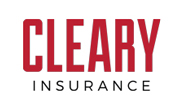Fidelity Bond (ERISA) Vs. Fiduciary Liability Insurance
Fidelity Bond (ERISA)
A fidelity bond protects a business against theft of its assets as a result of dishonest actions by employees. It does not cover the assets within a company’s retirement plan because plan assets are not the property of the company, but of the plan beneficiaries.
The Employment Retirement Income Security Act (ERISA) was put into place to safeguard employee retirement plans. Among other things, it requires the posting of an ERISA fidelity bond to protect the retirement plan from losses caused by fraudulent or dishonest acts by persons who handle the plan.
A plan must be bonded for no less than 10% of the amount of the plan funds. In most cases, the maximum ERISA bond required is $500,000 per plan, however higher limits are available. They are issued on a “blanket” basis, so everyone who handles the plan is covered.
Fiduciary Liability Insurance
Fiduciary liability insurance provides coverage for breaches of duty by ERISA plan fiduciaries. Fiduciaries are those responsible for operating and administering a retirement plan under ERISA. Some of these duties include: authority and management over plan assets, making high-quality prudent decisions, documenting and rendering investment advice over the plan’s assets. Unlike the fidelity bond, fiduciary liability insurance also offers fiduciaries protection of personal assets. Fiduciaries who breach their duties may be personally liable to make the plan whole for any losses caused by their breach, including lost opportunity and litigation costs. Fiduciary liability insurance can be purchased as part of an organizations management liability insurance program or on a stand-alone basis.
At Cleary, we will evaluate your business exposures and work with you to develop a comprehensive plan to safeguard your business. Give us a call today at 617-723-0700.
Planning for Aging Parents
Watching a parent becoming increasingly dependent on others for the normal activities of daily life can be difficult. It can be even harder for the parent to admit needing help. Creating a plan for how your parent(s), family and parents’ medical professionals will handle that possible scenario can alleviate misunderstanding and confusion when a crisis arises.
Here are 5 tips to prepare for parents’ aging:
- Decide on a point of contact – one sibling/close relative should be in charge of communicating with doctors. This person should have a health care proxy for the parent.
- Find a family-friendly primary care physician. An elderly parent may receive care from multiple specialists. With your parents, decide on one doctor to be the primary medical resource. Make sure reports from specialists are sent to the primary care physician.
- Create a central storage place for vital documents, including medical records, Social Security number and health insurance policy information. Hard copies should be duplicated and stored in at least 2 fire- and water-proof locations. Digital imaging/storage services offer a convenient place to access files remotely.
- Nursing home costs continue to rise faster than inflation and can quickly deplete the parents’ assets. If the parents qualify for underwriting, purchasing a policy can help safe-guard your savings from the parents’ health-care expenses in the future.
- Discuss finances – the point of contact relative, or another relative equipped to deal with financial matters, should have a durable power of attorney. This person should know the location of key accounts and policies, and the names and phone numbers for key advisors.
Executive Order 13706 – Mandatory Sick Leave
On September 7, 2015, President Obama signed Executive Order 13706, Establishment of Paid Sick Leave for Federal Contractors. The Executive Order requires employers that contract with the Federal Government to provide their workers with up to seven days of paid sick time annually. Regulations regarding the implementation are due from the Secretary of Labor by September 30, 2016. The Order applies to new and replacement for expiring federal contracts, on or after January 1, 2017.
Under the Order, employees may accrue up to 56 hours of sick leave annually. Any unused leave may be carried over, year to year. This sick leave is in addition to wage and benefit obligations under the Service Contract Act (SCA) and the Davis Bacon Act (DBA). If you would like to read more information about the Order please click here.
It is important that all contractors prepare themselves to meet the proposed Executive Order and have their personnel properly trained and ready to deal with SCA and DBA employees.
At Cleary, we know how important a comprehensive benefits package can be to your continued success. Give us a call today at 617-723-0700 and we will work with you to create a plan that meets your fringe-benefit obligations and provides your employees with valuable benefits.
